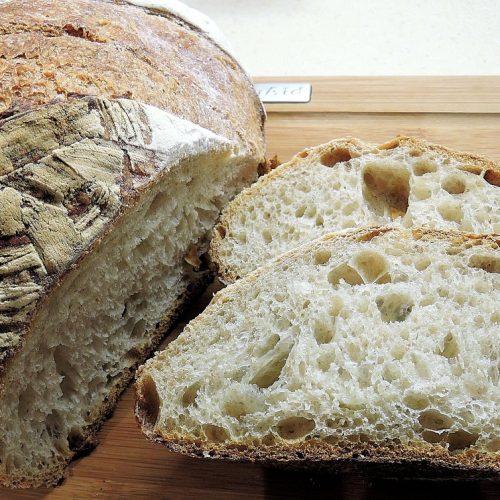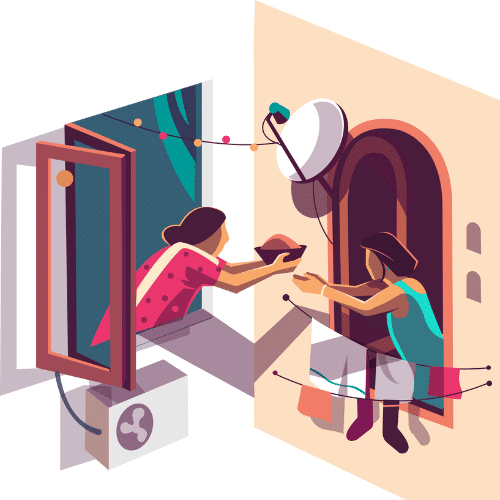If you’re like me, there’s nothing more satisfying than the smell of freshly baked sourdough wafting through your kitchen. It’s rustic, it’s tangy, and it’s downright delicious. But let’s be honest—traditional sourdough baking can seem intimidating. Kneading, stretching, folding, watching the clock… it can feel like a labor of love.
But what if I told you there’s an easier way? Enter the no-knead sourdough loaf—a method that delivers the same crispy crust, open crumb, and tangy flavor, with way less effort. If you’ve been hesitant to dive into sourdough because of time or skill, this recipe is about to become your new go-to.
Why No-Knead Works So Well
The secret to this magic lies in the long, slow fermentation. With a typical sourdough recipe, you’d spend quite a bit of time kneading and folding the dough to develop gluten. In a no-knead recipe, time does the heavy lifting. You simply mix the dough, let it rest, and the natural fermentation process strengthens the dough and develops flavor.
This technique isn’t just for convenience—there are some real benefits:
- Hands-off simplicity: Most of the time is spent waiting for the dough to rise, so you can go about your day.
- Better texture: The long fermentation develops a wonderfully chewy crumb and flavorful crust.
- Great for beginners: No need for fancy equipment or precise techniques. If you can stir, you can make this bread.
Se dette innlegget på Instagram
What You Need for No-Knead Sourdough Success
Before diving into the recipe, let’s talk basics. You don’t need much:
- A sourdough starter: This is your natural yeast, and the backbone of sourdough’s flavor. If you don’t have one yet, there are plenty of resources online to start your own (it’s easy, but requires about a week of feeding).
Read our sourdough starter guide for beginners
- A Dutch oven: This is key to getting that crackly crust. The steam created inside the pot helps the bread rise and form that beautiful, golden exterior.
- Patience: Since you’re not kneading, time is your friend. This dough needs to sit for 12-18 hours. But trust me, it’s worth it.

No-knead sourdough loaf
Ingredients
- 500 g wheat flour or a mix of wheat and whole wheat flour or any type of flour, preferably fine grind
- 375 g water room temperature
- 10 g salt
- 100 g active sourdough starter see our sourdough starter guide for more info.
Instructions
Mix the Dough
- In a large mixing bowl, combine 500g of bread flour and 375g of water. Stir until fully mixed.
- Add 100g of levain and 10g of salt. Mix with your hands or a spoon until everything is combined. The dough will be sticky and shaggy, but that’s okay—no need to knead!
- Cover the bowl with a damp towel or plastic wrap and let it rest for 30 minutes.
Stretch and Fold
- After 30 minutes, do 2-3 sets of stretch-and-folds over the next hour. To do this, grab one side of the dough, stretch it up, and fold it over the center. Rotate the bowl and repeat on all sides.
- This step is optional, but it helps develop the dough’s structure without kneading.
Bulk Fermentation (3-4 hours)
- After the last fold, cover the dough and leave it to ferment at room temperature for 3-4 hours. It will double in size, become bubbly, and have a slight dome when ready.
- If it’s very warm in your kitchen, it may take less time; if cooler, it may take longer.
- If you do not want to wait, you can alternatively put it in the refrigator and slow ferment there up to 24 hours.
Shape the Loaf
- Once the dough has finished bulk fermenting, gently turn it out onto a floured surface. Shape it into a round or oval loaf by folding the edges into the center, creating surface tension on the top.
- Place the shaped dough seam-side up into a well-floured banneton or a bowl lined with a floured cloth. Cover and let it rest for 1-2 hours at room temperature or overnight in the fridge.
Preheat the Oven (30 minutes before baking)
- Preheat your oven to (250°C). Place a Dutch oven or glass/ceramic heavy oven-safe pot with a lid inside to heat up for at least 30 minutes.
Bake the Loaf (45 minutes)
- When ready to bake, carefully remove the Dutch oven from the oven. Turn the dough out from the banneton onto a piece of parchment paper.
- Score the top of the loaf with a sharp knife or razor blade.
- Lift the dough with the parchment paper and place it inside the hot Dutch oven. Cover with the lid and bake for 25 minutes.
- After 25 minutes, remove the lid and continue baking for another 15 minutes at 225°C until the crust is deeply golden and the loaf sounds hollow when tapped.
Cool it on rack
- Transfer the bread to a wire rack and let it cool completely (min 1 hour) before slicing—this ensures the crumb sets properly.


